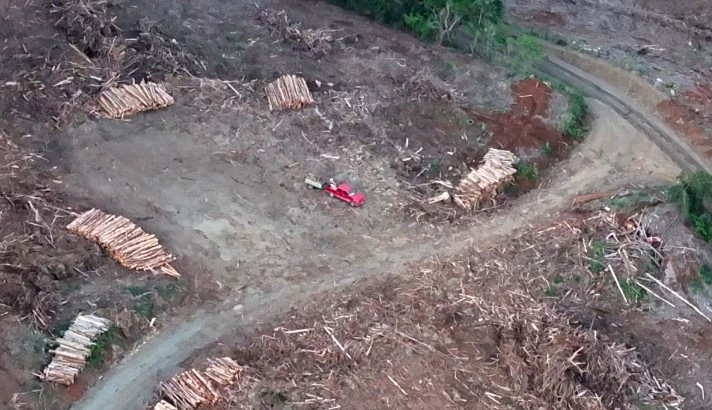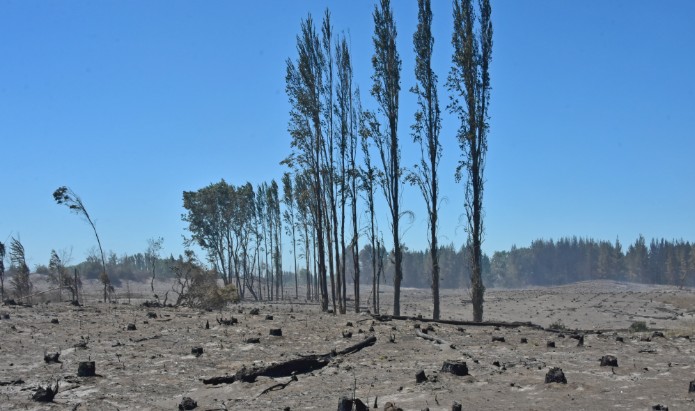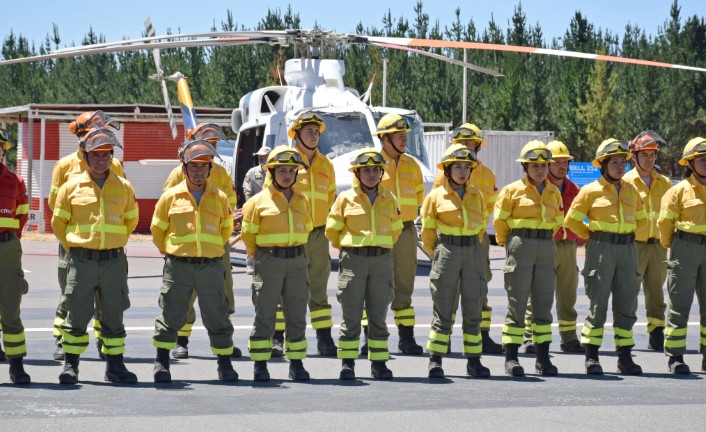They Analyzed the Progress and Challenges of Female Labor Inclusion in the Forestry Sector
Over 70 percent of administrative tasks performed in various forestry companies nationwide are carried out by women, according to information provided by the Association of Forestry Contractors.
Sixteen percent of forestry service providers are women, which was considered an opportunity for these workers to increase their participation and secure more competitive incomes.
Spokespersons from forestry associations analyzed the gaps to address in female labor inclusion, with less than 15 percent of women participating in the sector, acknowledging there is great potential to develop the industry.
Victoria Saud, General Manager of the Chilean Wood Corporation (Corma), told La Tribuna newspaper: "In the forestry-timber sector, we are aware of the challenges but also of the great opportunities presented by gender equity and diversity. We know that building organizations capable of adapting and anticipating modern forms of employment in pursuit of plurality will, in turn, allow us to manage diversity as a competitive advantage by bringing new perspectives and opportunities within companies. In this sense, since not only societies are constantly transforming but also the social composition of organizations, adapting to achieve greater diversity—and its potential benefits—is key to leveraging new talents."
On this matter, the Corma spokesperson added: "With this challenge in mind and understanding the reality of companies, in 2020 we created the More Women in Forestry Initiative, which incorporates measurements and actions to advance gender equity in our sector."
THE PANDEMIC AND ITS IMPACT ON THE SECTOR
"The first action taken by this program was establishing the baseline for female participation in the sector, which resulted in a 13.5% rate nationwide. This measurement allowed us to gauge the challenge and create an action plan to address the identified gaps," Saud stated regarding the First Report on Female Participation in the Forestry Sector, presented in early 2021. She mentioned that work lines were defined: "We have a clear but flexible and adaptable roadmap for the next four years, with concrete actions to provide management tools to organizations in our sector, aiming for 20% female participation by 2026."
She also highlighted: "Gender equity, understood as equal opportunities between men and women, is a growing concern both globally and nationally, ensuring women's integration into public and private spaces in the labor, academic, and scientific fields. The recent pandemic has further widened the gender gaps that had been narrowing in recent decades, affecting salaries, women's entry into the workforce, the burden of caregiving roles, and the lack of progress in shared responsibility."
The Association of Forestry Contractors stated in a press release issued after publishing the results of the First Study on Female Labor Participation in companies providing forestry services that "participation remains very low, not exceeding five percent in these types of companies."
Regarding tasks performed within forestry operations, the same study reflected that "while most male personnel work in operations (81.4%), most female personnel work in administration (71.1%), and the area of risk prevention and environment is predominantly occupied by women." The type of contract was another aspect addressed by the study, revealing minimal gender-based differences: "Regardless of gender, nearly 90 percent of those working in forestry contractor companies have indefinite-term contracts," reads the report from the first study on female participation in forestry operations.
PROJECTIONS AND FEMALE LABOR INCLUSION
René Muñoz Klock, Manager of the Association of Forestry Contractors, said: "In this first study on the labor market for women in our sector, we wanted to quantify their actual participation, as we need to advance the inclusion of a significant portion of the population. We are working with Sernameg, and lately, there has been interest among female heads of households to enter spaces traditionally dominated by men." The first study of its kind conducted by the association surveyed 50 forestry service companies, revealing that only 15.7 percent of those working in field operations are women. Muñoz noted: "There is a significant opportunity for them to become forestry machinery operators and earn competitive incomes, as demonstrated by the study, which concludes that the forestry sector offers good wages and job stability, given that many tenders span four to five years. The challenge for the forestry sector on Women's Day is to advance their incorporation into training and development for new workers in operations, maintenance, and logistics."
Sourcelatribuna.cl


















Rita Borquez
Publicado el 10:48, 24 MarchBuenos días, ¿es posible acceder al documento del estudio publicado? es para una tesis en desarrollo acerca de las brechas de género en el empleo, especialmente sector agrícola y forestal.
Muchas gracias y saludos cordiales
Rita Bórquez
Socióloga